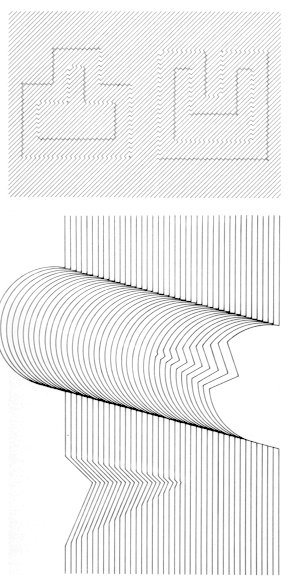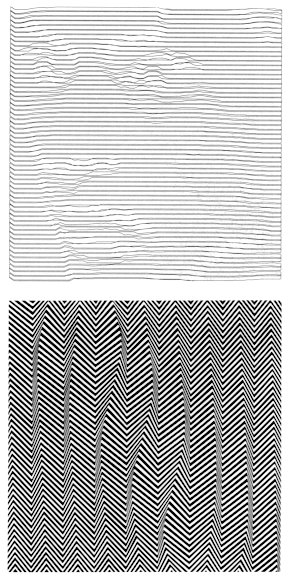(1) Parallel lines changing in direction
When parallel lines change their direction halfway,
a three-dimensional illusion is created with a feeling of unevenness.
The parallel lines sometimes continue to look like
parallel lines after bending at a certain point, or they sometimes are
converted into curved lines The former has a feeling of hardness, while
the latter has an elegant emotion.
Figure 419 below is a face of a human being drown
using a computer. The complicated shapes of the face consisting of curved
surfaces are expressed softly by delicately changing the direction of the
parallel lines.

417
418
|
|

419
420
|
|
NEXT
CONTENTS